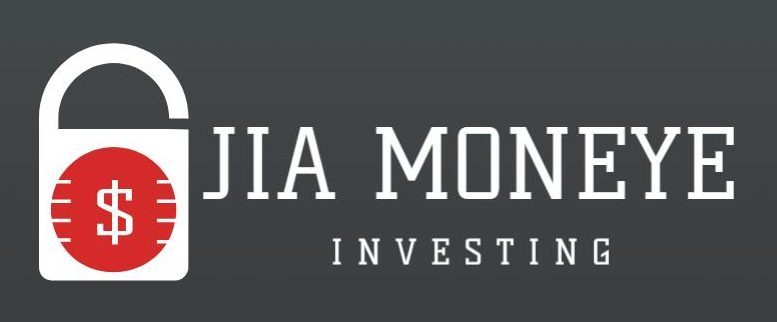
Navigating the World of Auto Loans
Exploring the Various Types of Personal Loans: A Comprehensive Guide
Understanding the different types of personal loans can be a daunting task, especially if you’re new to the world of finance. However, with a little bit of guidance, you can navigate this landscape with ease. This comprehensive guide will help you explore the various types of personal loans, so you can make an informed decision that best suits your financial needs.
Firstly, let’s delve into unsecured personal loans. These are loans that do not require any collateral, meaning you don’t have to put up any assets, like your home or car, to back the loan. Lenders offer these loans based primarily on your creditworthiness. If you have a good credit score, you’re likely to get favorable terms, such as lower interest rates. However, because the lender takes on more risk with unsecured loans, they may come with higher interest rates if your credit score isn’t stellar.
Next, we have secured personal loans. Unlike unsecured loans, these require collateral. This could be anything of value that you own, such as your house or car. If you fail to repay the loan, the lender has the right to seize the collateral to recoup their losses. The advantage of secured loans is that they usually come with lower interest rates, as the lender has a safety net in the form of your collateral. This can be a good option if you’re confident you can make the repayments on time.
Then there are debt consolidation loans. These are designed to help you manage multiple debts more effectively. Instead of juggling several payments with varying interest rates, you can consolidate all your debts into one loan with a single monthly payment and, often, a lower interest rate. This can simplify your finances and potentially save you money in the long run.
Another type of personal loan is a payday loan. These are short-term, high-interest loans designed to tide you over until your next paycheck. They’re typically for small amounts and are expected to be paid back in full on your next payday. While they can be useful in a pinch, they can also lead to a cycle of debt if not managed carefully due to their high interest rates and fees.
Lastly, we have installment loans. These are loans that you repay over a set period of time in equal installments. The terms can range from a few months to several years. The interest rate is usually fixed, meaning it won’t change over the life of the loan. This can make budgeting easier, as you’ll know exactly what your monthly payment will be.
In conclusion, there are many types of personal loans available, each with its own set of advantages and disadvantages. Whether you’re looking for a loan to consolidate debt, cover an unexpected expense, or finance a large purchase, there’s likely a personal loan that fits your needs. Remember, it’s important to do your research and understand the terms of any loan before you sign on the dotted line. With the right knowledge and careful consideration, you can make the best financial decision for your situation.
Understanding the Mortgage Qualification Process: A Comprehensive Guide
Qualifying for a mortgage can seem like a daunting task, especially for first-time homebuyers. However, with a clear understanding of the process, it becomes a manageable and even exciting journey towards owning your dream home. This article will provide a comprehensive guide to understanding the mortgage qualification process.
The first step in qualifying for a mortgage is to assess your financial situation. This involves taking a close look at your income, savings, debts, and credit score. Lenders use these factors to determine your ability to repay the loan. A steady income and a good credit score are particularly important as they show that you are a reliable borrower. If your credit score is less than stellar, don’t worry. There are steps you can take to improve it, such as paying off debts and making sure all your bills are paid on time.
Next, it’s time to determine how much you can afford. This is where your savings come into play. The more money you have saved for a down payment, the less you’ll need to borrow. Most lenders recommend that your mortgage payment, including taxes and insurance, should not exceed 28% of your gross monthly income. There are also online calculators available that can help you figure out how much house you can afford based on your income, debts, and expected down payment.
Once you have a clear picture of your financial situation and how much you can afford, it’s time to get pre-approved for a mortgage. This involves submitting a mortgage application and providing documentation to prove your financial situation. The lender will then give you a pre-approval letter stating how much they’re willing to lend you. This not only gives you a clear idea of your budget but also makes you more attractive to sellers as it shows you’re serious and financially capable of buying a home.
After getting pre-approved, it’s time to start house hunting. This is where the fun begins! You can work with a real estate agent to find homes within your budget in your desired location. Once you find a home you love, you can make an offer. If the seller accepts your offer, the house will go into escrow, which is a period of time (usually 30 days) where the seller takes the house off the market while the final details of the sale are worked out.
During escrow, the lender will have the home appraised to ensure its value matches the purchase price. They will also require a home inspection to check for any potential issues with the house. If everything checks out, the lender will finalize your loan and you’ll close on the house.
The final step in the mortgage qualification process is closing on the house. This involves signing a lot of paperwork, but once it’s done, you’ll be the proud owner of a new home!
In conclusion, qualifying for a mortgage involves a series of steps, from assessing your financial situation to closing on the house. While it may seem overwhelming at first, understanding the process can make it much easier. With careful planning and preparation, you can navigate the mortgage qualification process and move into your dream home.
Understanding the Basics of Auto Loans: A Comprehensive Guide
Navigating the world of auto loans can seem like a daunting task, especially if you’re a first-time car buyer. However, with a little bit of knowledge and understanding, you can confidently navigate this process and secure the best possible deal for your new vehicle.
Auto loans, in their simplest form, are loans provided by a financial institution to help you purchase a car. They are typically paid back over a set period of time, with interest. The amount you borrow, the interest rate, and the length of the loan all factor into your monthly payment.
When you’re considering an auto loan, it’s important to understand the key terms and concepts. The principal is the total amount of money you’re borrowing to purchase the car. The interest is the cost of borrowing that money, expressed as a percentage. The term is the length of time you have to pay back the loan, usually expressed in months.
One of the most important aspects of an auto loan is the Annual Percentage Rate (APR). This is the total cost of the loan, including both the interest rate and any additional fees, expressed as a yearly rate. The APR gives you a way to compare different loan offers on an equal footing.
When you’re shopping for an auto loan, it’s crucial to compare offers from different lenders. Each lender will have different terms, interest rates, and fees, so it’s important to look at the total cost of each loan, not just the monthly payment.
Another key factor to consider is the down payment. This is the amount of money you pay upfront towards the purchase of the car. The larger your down payment, the smaller your loan will be, which can save you money in interest over the life of the loan.
It’s also important to understand that your credit score plays a significant role in the auto loan process. Lenders use your credit score to determine your risk as a borrower. If you have a high credit score, you’re likely to get a lower interest rate. If your credit score is low, you may have to pay a higher interest rate or may not be approved for a loan at all.
One common misconception is that you have to accept the financing offered by the car dealership. In reality, you can often get a better deal by securing your own financing through a bank or credit union. This allows you to negotiate the price of the car separately from the financing, which can save you money.
Finally, it’s important to remember that an auto loan is a long-term financial commitment. Before you sign on the dotted line, make sure you can comfortably afford the monthly payments. Consider your other financial obligations and make sure a car payment fits into your budget.
In conclusion, understanding the basics of auto loans can help you navigate this process with confidence. By understanding key terms, comparing offers, considering your credit score, and planning for the long-term, you can secure the best possible deal on your auto loan. Happy car shopping!


